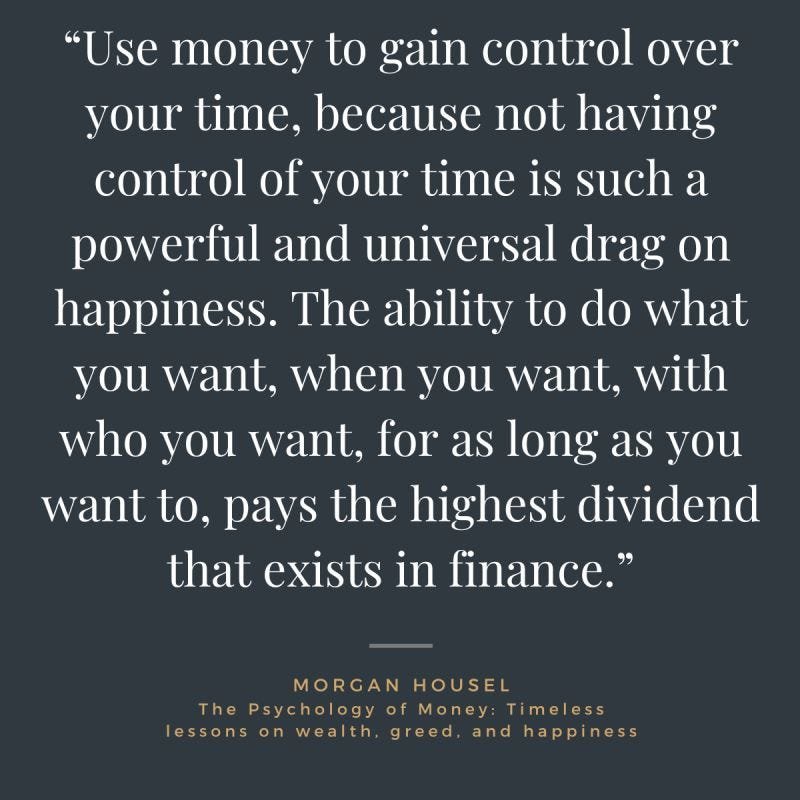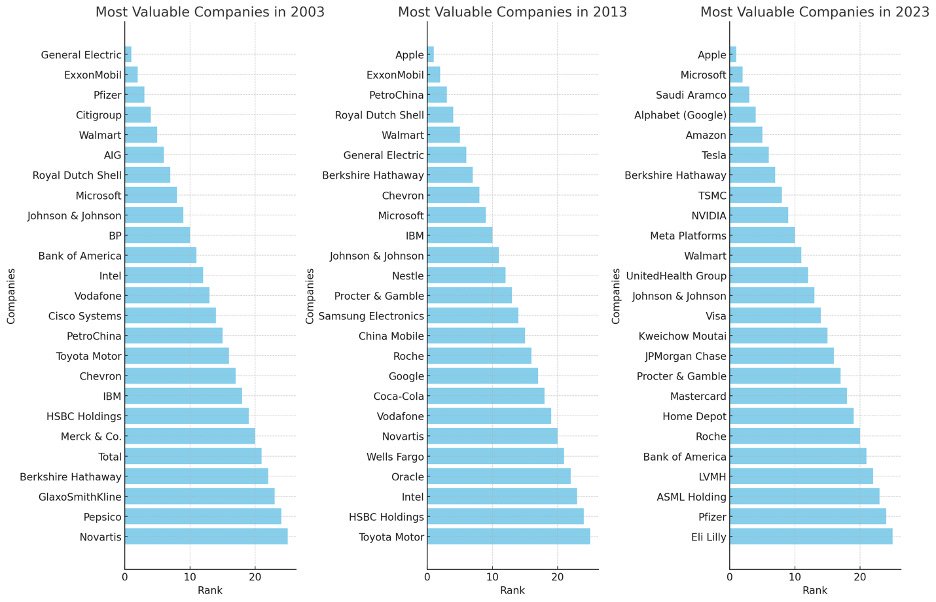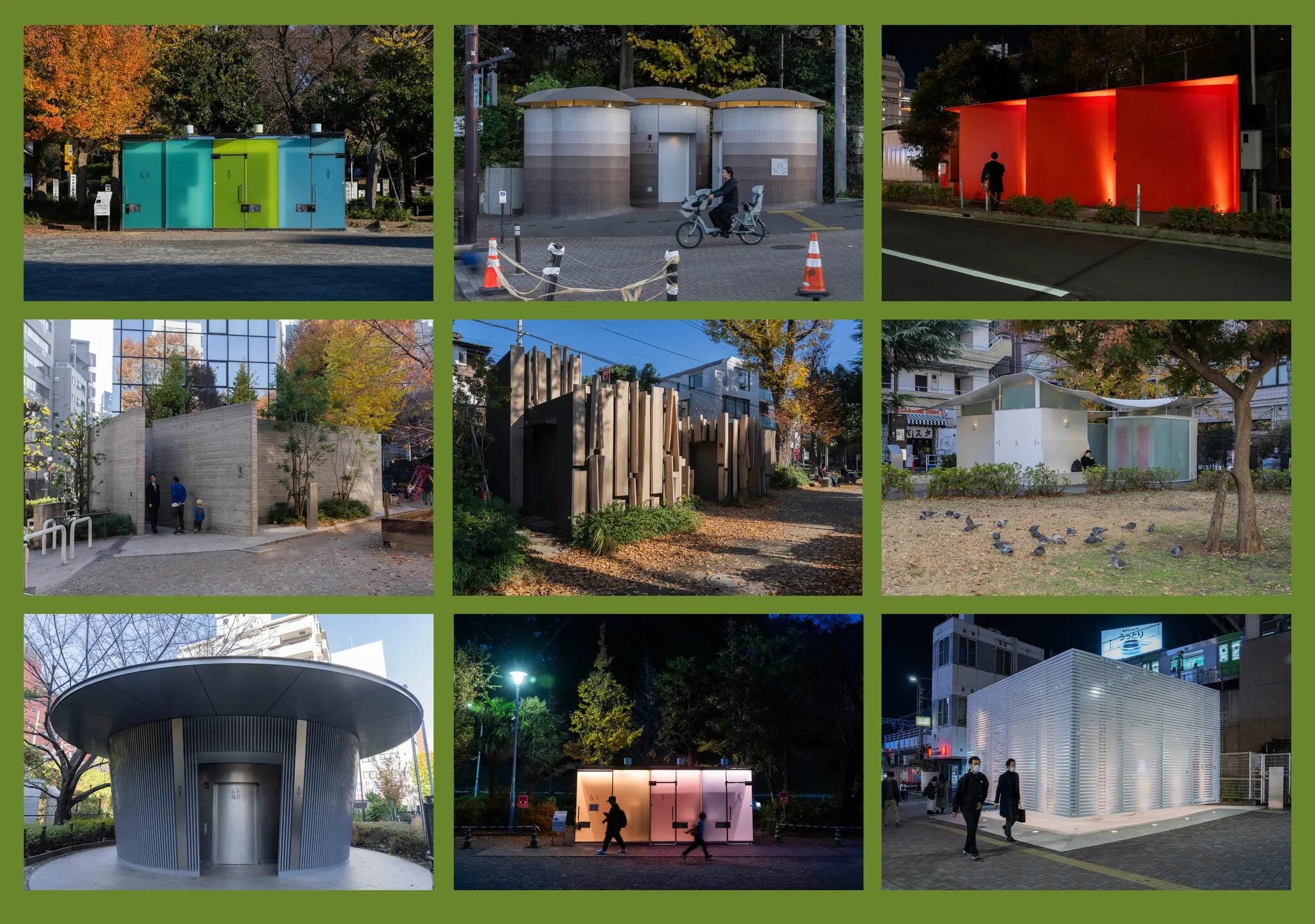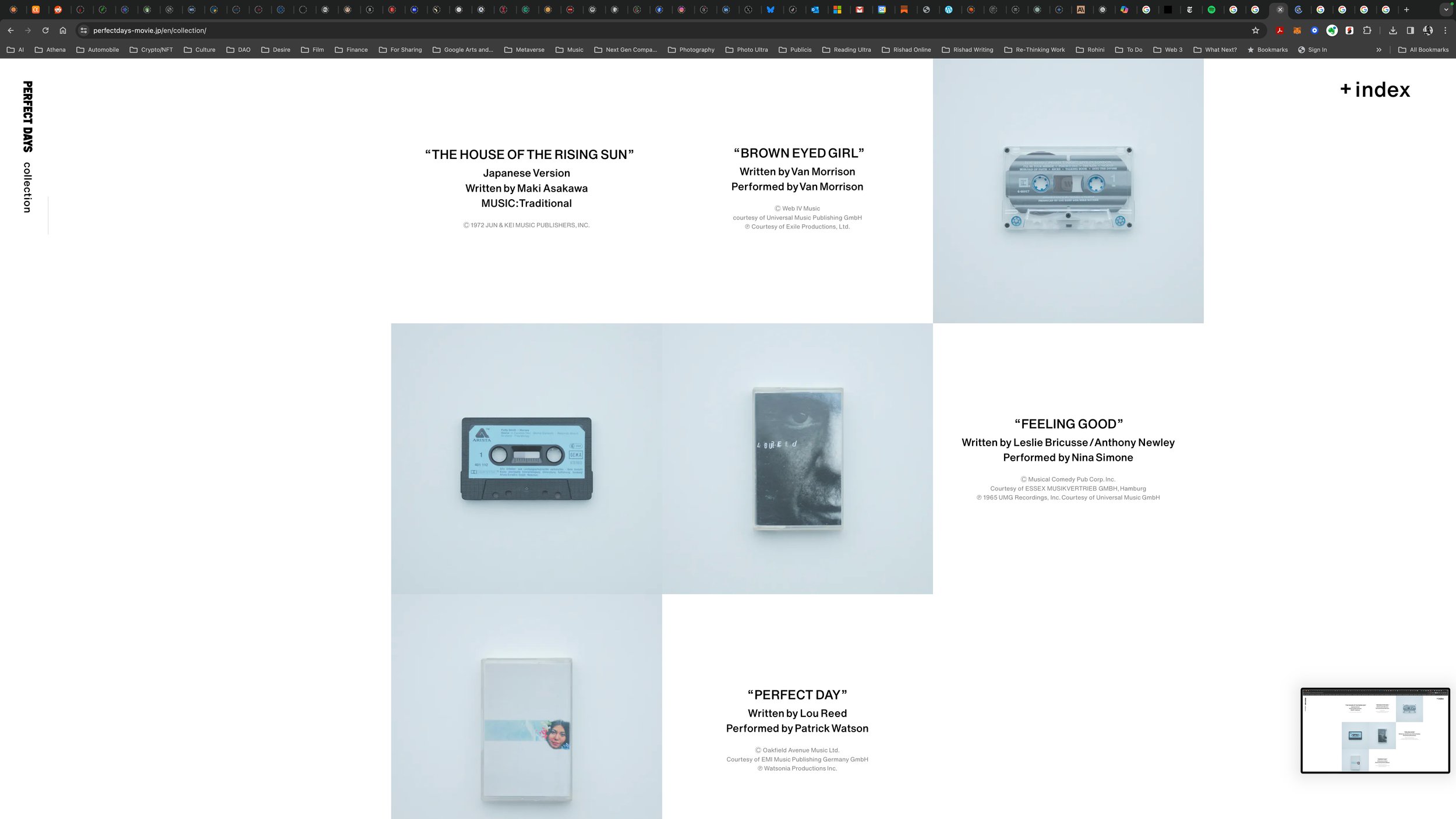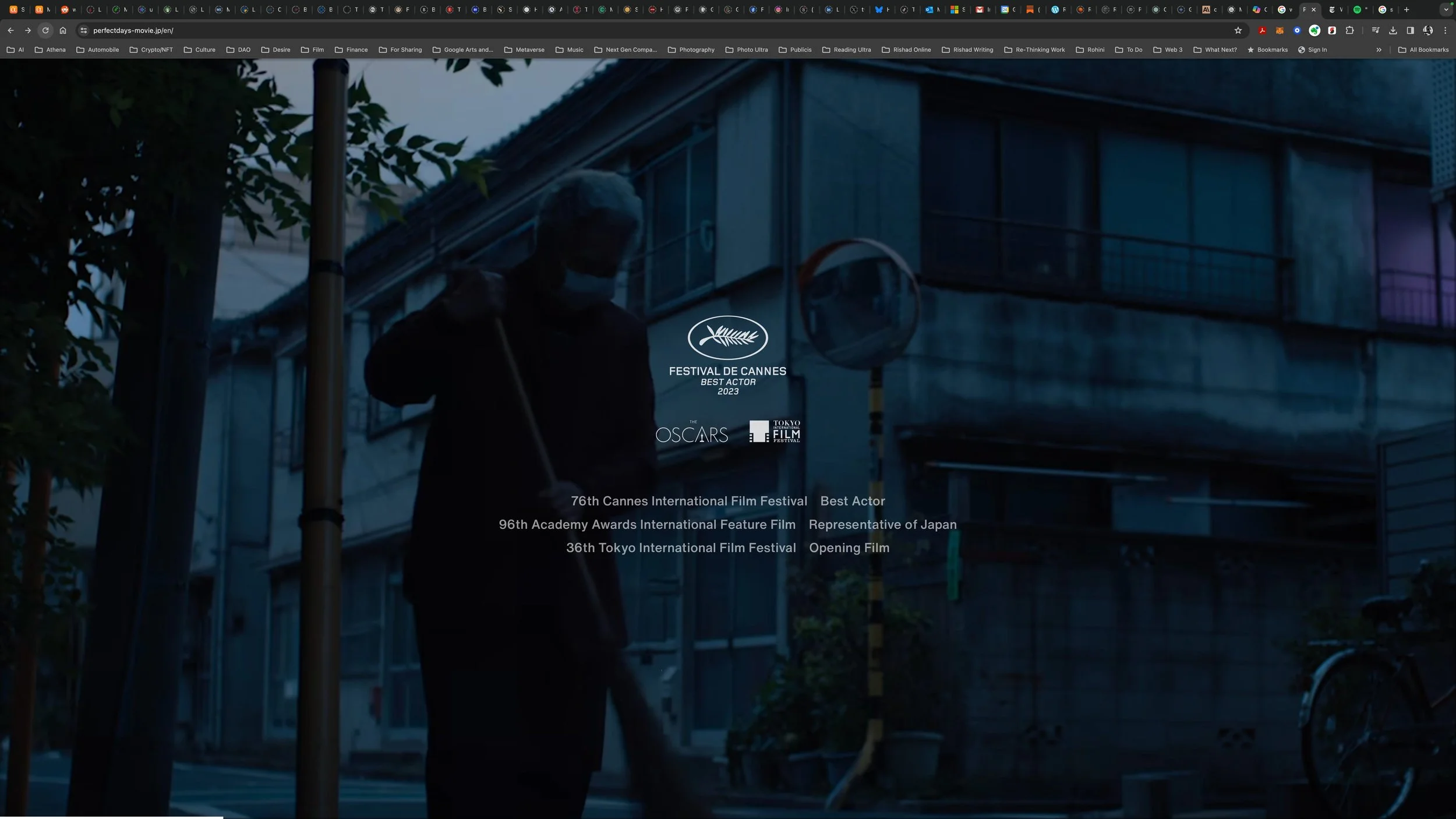On Stuff.
Visual by Gemini Advanced
A colleague and friend recently asked a question:
Do we own stuff or does stuff own us?
His family was in the midst of a career driven move and a lot of the discussion had to do with stuff.
Does one sell or rent or keep a home empty.
If one sells it or rents it what to do with all the stuff inside. And the cars and …
This is a very Western and particularly American issue given that in many parts with hundreds of millions lacking basic necessities but a widespread issue.
The average American household contains 300,000 items; the U.S. has only 3.1% of the world’s children but 40% of the world’s toys; and Americans spend $1.2 trillion annually on non-essential items — ie, items they don’t need.
According to the Organizer Chicks Blog:
“In 1960, the average family had 2.4 children, and the average home was around 1,100 square feet. By 2010, the average American family had only 0.9 children and 2,300 square feet. So, as a country, we have fewer people living in more square feet than ever before.”
There is a famous law called “Parkinsons Law” which states that the duration of tasks expand to fill their allotted time spans, regardless of the amount of work to be done.
Work expands to fit time available.
The same thing has happened with space. According to the National Association of Productivity and Organizing, 75% of American households can’t park even 1 car in their two-car garage.
This has made self-storage a huge industry in the US with 39 billion dollars of revenue and it is enjoying exploding growth:
In 2022 there were more self-storage facilities (52,786) than the combined locations of some of the largest restaurant chains in the United States. (This suggests a new chain should open with self-serve facilities in every storage facility and we may have the next McDonalds or Starbucks created in a hurry).
Unfortunately there is little co-relation between stuff and happiness. In fact there appears to be a negative co-relation as people a) compare their stuff with other peoples stuff, b) are tied down by their stuff..almost a legacy cost that keeps them rooted, c) have to pay a lot in increased rent or mortgage to house their stuff and d) apparently spend 17 minutes a day finding what they want among the stuff they have.
Thus the popularity of Marie Kondo and their ilk.
The irony is now we are surrounded by too much Marie Kondo and she also sells stuff!
Merchandise or “Merch” is the currency of the social media age.
Another Philosophy.
One of my favorite books is called Vagabonding and one of my most popular posts was on the philosophy of Vagabonding.
Vagabonding is an outlook on life.
Vagabonding is about using the prosperity and possibility of the information age to increase your personal options instead of your personal possessions.
Vagabonding is not a lifestyle, nor is it a trend. It’s an uncommon way of looking at life-a value adjustment from which action naturally follows. And as much as anything, vagabonding is about time-our only real commodity-and how we choose to use it.
Among the best if not the single best book on wealth is Morgan Housel’s “Psychology of Wealth”. If you have not read it you are truly missing out on a combination of wealth and life wisdom written with such a fusion of intelligence, insight, illumination and inspiration that you are unlikely to look at money, finance and wealth in the same way ever again.
There are many many lessons and practical applications in the book but a key underlying message is simply one word.
Enough.
Here is one story:
“At a party given by a billionaire on Shelter Island, Kurt Vonnegut informs his pal, Joseph Heller, that their host, a hedge fund manager, had made more money in a single day than Heller had earned from his wildly popular novel Catch-22 over its whole history. Heller responds, “Yes, but I have something he will never have … enough.” Enough. I was stunned by the simple eloquence of that word—stunned for two reasons: first, because I have been given so much in my own life and, second, because Joseph Heller couldn’t have been more accurate. For a critical element of our society, including many of the wealthiest and most powerful among us, there seems to be no limit today on what enough entails.”
― Morgan Housel, The Psychology of Money
Keys to Success: The 3 Dualities.
Painting by Rene Magritte
Successful leaders, teams and companies that endure over the long run seek to find ways to balance, unite and integrate opposing dualities into a harmonic and flexible approach that leverage opposing tendencies without merging or averaging them.
Here are three key dualities we should all become masters of managing whether it be personally or for our organizations.
Roots and Wings.
Story and Spreadsheet.
Centralized Control and Edge Power.
Painting by Rene Magritte
Roots and Wings
Between 1962’s Lawrence of Arabia and 2020’s The Mandalorian there is much in common including each being an innovative use of a new film technology. It was 70 MM wide screen for Lawrence of Arabia and high-definition streaming for The Mandalorian which brought Disney into the future.
But in world view they are completely different.
In Mandalorian we sense a force and a code best captured in the line “This is the way” repeated throughout the series. There is a code of conduct almost religious. A way of doing things handed down over time. A deterministic march forward.
In Lawrence of Arabia a key theme is of old ways and traditions being challenged best captured by the line “Nothing is written”. The desert is empty, and the sands are wiped clean with the winds of change. The past is not an anchor, and one must write, sculpt, and invent the future.
Most individuals and firms must balance both the roots (history, legacy, anchored costs, reputation, provenance, rule of law and expectations) of “this is the way” with the wings (leaps of faith, casting of on a new journey, challenging the status quo) of “nothing is written”.
We must balance roots and wings.
Roots provide stability, a place to stand, a passed along tradition and a sense of history.
But roots alone which are important to ensure one does not get blown away by the winds of change might anchor one too much to the past and to a status quo which may no longer be relevant.
Thus, the importance of wings.
The ability to raise oneself and see above the horizon, to look down with new perspectives and to ensure that the roots which feed us do not wither by failing to adapt to a new world.
Roots nourish via what we were and where we came from and what we did.
Wings encourage us to go where we need to and to blaze new trails which will lay down tomorrows roots and are a highway to what we will accomplish.
If every individual and company is a story with a place we came from, every individual and a firm is also about a place we are going to.
We all integrate the dualities of roots and wings.
Too rooted and we may wither way as changing times and climate bring drought to the place and way we were.
Too winged and we may be blown away in the gusts of change.
Too rooted and we may be seen as old school, hide bound to tradition and inflexible.
Too ready to fly with change may find us painted as unreliable, undisciplined, and short-term oriented.
Transformation is twisting ourselves and companies into new shapes with the clay of what we were and new skills and pieces we acquire.
Painting by Rene Magritte
Story and Spreadsheet.
Today we live in a data driven, silicon based, algorithmic powered world.
As we all fixate on forging things with the scalability, math and plumbing of data, a case may be made that true wealth and joy are being sculpted with the specialness, magic, and poetry of creativity.
A story is “data with a soul” and “we tell ourselves stories in order to live”
Humans seek the magical, choosing with our hearts and then using numbers to justify what we just did.
If humans made ROI decisions, we would not have children since on a financial and other numerical criteria they do not compute.
Disney has the “Magic Kingdom” and not the “Algorithmic Kingdom” and Disney+ invests in data and technological capital to ensure competitiveness but they differentiate using creative and intellectual capital.
Netflix stock price fluctuates on its ability to attract new subscribers which is directly co-related with its ability to launch new creative endeavors and its true difference today versus other competitors is not necessarily just it’s celebrated data but it’s ability to harness global creative talent versus most competitors who focus on creative national talent. Eg. Squid Games.
Until Novo Nordisk (maker of Ozempic and Wegovy) the most valuable company in Europe was LMVH (now number 2) the owner of Louis Vuitton and Tiffany and the most valuable company in the world was Apple. Both found ways to be spreadsheet operators at the highest level while differentiating on story telling and creativity.
Both companies have amazing supply chains and foundries/technologies, but they differentiate versus competitors and have an ability to charge significant premiums (they manage to get their buyers to forgo data driven decision making that many marketers fixate on) by focusing on provenance, materials, design, innovation, and storytelling.
Wealth and Brands are created through combining story and spreadsheet. Today when a new dawn of creativity and making is being unleashed and data and tech is being commoditized and offered as ingredients and service, we need to make sure we are focusing on our ability to attract, retain, train, re-aggregate and unleash talented creators and makers. And to do so in a flexible way, in fear free innovative cultures that modern technology and the new unbundled distributed workspace of tomorrow are enabling.
Let us stop fixating on the Arrows (how they are made, how many big lakes full of them we have and how cheaply we can buy them) and instead let us focus on the Archers.
Getting the arrows is not too difficult but attracting and motivating the archers is.
Painting by Rene Magritte
Centralized Control and Edge Power.
If one studies the history of any firm you will find it oscillate from being centralized to decentralized every few years.
A firm may begin decentralized but then find some combination of issues with quality control, duplication of costs, complexity or a legal snafu results in a massive centralization drive.
Now centralized the company finds itself ossified and process driven. It is now too slow to move in a rapidly changing world with a one size fits all approach that is rejected by different types of firms that the company is comprised of or a lack of sensitivity to different geographies. The center is too far removed from the day to day reality of business trench warfare and and so the pendulum swings the other way.
Stay in a company for a decade or more and you will go on a round trip ride from one dogma to the the other.
The reality is that successful companies combine both of these tendencies at the same time rather than swinging wildly from one side to another.
There are significant advantages driven by the scale of spending ( combined they give a buyer leverage), quantity of data ( in a world of large language models one needs firm wide access to data) and emerging challenges (responsible AI) which require a centralized approach either at a country, regional or global level calling for a co-ordinated approach as a starting point for legal, data, account/client management and procurement services which are then adapted and tailored for local realities of culture and law.
On the other hand innovation and experimentation occurs on the edge and many accounts and clients are deeply idiosyncratic in the way they do business and expect to be serviced uniquely in customized ways. In these cases the edge drives the interaction and innovation which is then reported back to center who a)create new best practices by identifying patterns across markets and b) modify any central edicts in response to the twitchy signals from the edge.
World class technology that enables information to flow freely and a culture of open communication and collaboration with a focus on excellence are the key factors that allow the combination of center and edge.
If the tech and data enables but the teams are engaged in a civil ware it will not work.
If every body gets along but there is no data and tech sensitivity to calibrate and implement changes in real time will also fail.
The debate of center versus edge is so twentieth century.
It is now combining the duality of center and edge.
Roots and Wings. Story and Spreadsheet. Center and Edge.
Duality wins.
Fractionalized Employment Now!
Photography by Albrecht Voss
Most of us need to work and it is central to our identity.
Yet, even though work is important most of us do not define ourselves solely by work.
We have many other identities and responsibilities (parent, caregiver, sailor, artist…) that make us who we are or passions we wish to pursue.
To integrate and deal with the spectrum of what life brings we could work at a job with all its benefits but also constraints or be a free-lancer/independent worker with all its freedoms but uncertainties.
Today due to several forces there is the possibility of another way as we architect the future of work.
A way that benefits both the individual employee and the firm.
Photography by Albrecht Voss
Four Forces.
Four con-current forces are re-sculpting the nature of work and what constitutes a company in the most dramatic ways in over a century.
1. AI: AI will significantly enhance productivity. Companies will be be able to do more with less. While new types of jobs will be created and enhanced productivity can allow companies to invest in new areas so employment will grow, it is very likely that the need for employees in any existing knowledge role will decline.
People will either do higher level tasks or be trained for new tasks or see a demand for their existing skills diminished.
2. Declining populations combined with an explosion of older people: Except for the continent of Africa most countries particularly Europe, the US, China, and Japan which account for most of the global GDP are seeing shrinking populations.
At the same time all these countries are seeing rapidly aging populations with 10,000 people turning 60 every day in the US. Many of these aging folks have skills and expertise that will remain critical in an AI age ( perspective, mentoring people, expertise in craft) and are likely to want to or need to work for financial or other reasons but may not want to or be in a position to work full-time.
3. Covid-19: Unbundled and distributed work has changed people’s mindsets. Our minds are like champagne corks that once opened swell and do not fit back in the bottle. Everything is being questioned from the nature of work to the role of management.
People want to and need to work but many now no longer ask how do I find time for my life in a world of work but rather how does work fit in my life?
4. Generational Mindsets and the Side-Gig: Today’s reality is that 66 percent of Gen-Z with a full-time job in the US have a side gig or side hustle and 76 percent want to work for themselves. A plethora of new marketplaces from UpWork to Etsy to Shopify are enabling the feeding of passion projects, enhancing optionality and increasing income.
Photography by Albrecht Voss
The Fractionalized Employee.
Today most companies combine three types of work forces.
1) A full-time employee,
2) A full-time or part-time contracted employee from another firm (e.g., Wipro or Cap Gemini)
3) Free-lancers (directly or via an intermediate firm)
Full-time employees are usually the backbone of any company and its culture with contracted and free-lancers being mixed in to expand expertise and manage oscillating workloads in a cost-effective manner.
We may now want to think of a fourth type of worker to reflect the forces of technology, shifting demographics and new mindsets: The Fractionalized Employee.
Imagine if one could get both the continuity and loyalty of a long-term employee with the flexibility of cost management of a part time employee and the expertise of a free-lancer and do so in a way that both grows employees and retains them in the long run.
This is the Fractionalized Employee.
Every employee in the company is given a choice to work 100%, 75% or 50% of their time.
They get to select this at the beginning of every year or can adjust to a different level when a life event occurs (health, birth of a child, need to take care of a parent, a passion that needs to be attended to or other life issues).
No longer does an employee have to choose between staying or going or being torn trying to do two things at one time. If they wish to try out a different type of non-competitive job (starting a gaming company –assuming they are not working at a gaming company--or being an artist or writing a book) it behooves their employer from letting them do so because retaining half or three quarters of a talented person is better than zero. As importantly these external skills or vocations will make the employee better rounded and probably more productive. And there will be cost savings from both reduced compensation but also eliminating the friction and cost of severance, re-hiring, and training.
And as AI makes companies realize they need to change, adapt and manage new talent mixes, fractionalized employment allows for a smart way to manage costs by dialing down employee cost while ensuring the dignity of continued employment, the security of continued health care and the enablement of those employees using the non-employment time to earn revenue or build new skills for an AI age or take care of personal needs.
And it will probably attract a lot of talent who may want to work 50 to 75 percent of their time.
Including the more seasoned who might only want to work half time. As countries grapple with aging and declining populations this is one way to address this issue.
For the employee they do not have to give up an income stream, health benefits or a part of their identity to build new skills, pursue new horizons or take care of life’s events. Over the course of a career, they can dial up and down the percentage they work.
The Fractionalized Employee model will allow companies to retain talent, grow talent, mix, and match talent in ways that are truly win-win.
Employees gain greater flexibility, optionality, opportunity for growth, managing life stages, and time to build additional expertise.
Employers can attract new types of talent, retain starts, elongate the careers of seasoned experts and long time employees, calibrate costs in humane ways that do not negatively impact culture, and enhance adaptability to changing circumstances.
Photography by Albrecht Voss
Overcoming the hurdles to Fractionalized Employment.
The fact that outside Australia and some countries in Europe this is a very rare option is due to several concerns among employers which need to be addressed.
There are many concerns from it will be hard to implement to employees will use this to prepare for their next gig to customers and clients will find it un-acceptable.
We must lose these controlling mindsets, fear filled mindsets and lack of imagination mindsets.
Employee Flight: Talent is not owned by a company. They work for the company. Giving them more flexibility is likely to increase retention since talent can now do their side hustle or passion project openly and bring that expertise and credibility into the company. The time they have for themselves can help them look after their families or try new stuff without having to leave their company. They often can also discover that the the grass is greener on the other side because it is fertilized with bullshit. Trust talent and they will trust back.
Client/Customer Challenges: Clients and Customers are likely to embrace this for a variety of reasons. First they are likely in an AI age want to continue to access their key talent but given productivity increases not need as much. Second, if given a choice between not having access to the folks they want or less access they are likely to opt for limited access. Third coverage can be guaranteed because fractionalized employees can be 100 percent available during key periods and the savings from their compensation can be used to provide customers with a wider palette of talent or other coverage.
Most talent organizations are really good and can definitely incorporate this new type of worker by adopting the following process to make this manageable:
Limited Choices. Employees who wish to work less than full time but get full health benefits and pro-rated financial benefits such as bonuses or equity should be given only two alternative levels--50 percent of full time or 75 percent of full time. This limitation makes the program easier to administrate and manage. If people were allowed to select any percentage, it would be a nightmare for payroll and to arrange coverage when they were off work.
Limited Sign Up/Change Periods. An employee can only decide to change their percentage once a year during a particular two-week period—perhaps in September of the previous year for the following year. The only exception would be a major life or health event. This enables companies to forecast how many workers they will need and how work gets covered. It also enables far easier administration.
Limited Eligibility. Being selective helps funnel high performing candidates into the fractionalized program, a key measure since the program is designed for the company’s best talent and those who are well-versed in the company’s culture and processes. To limit eligibility, the following criteria are useful:
a)Having a minimum number of years of service. For example, one must have worked in the company for at least x years full time before being eligible.
b)Achieving a specific level of performance or a minimum rating level (only candidates with levels evaluation).
c)Restricting eligibility. Certain roles which require full-time presence such as overseeing a large team or providing continuous service to a highly demanding customer.
Companies that allow for Fractionalized Employment are going to have a significant advantage in a world of AI, changing demographics, new mindsets and emerging marketplaces.
The Rise and Fall of Giants?
Photography by Aline Smithson
When companies like AT&T, IBM, General Electric and General Motors were the world’s leading organizations in the 20th century, it seemed as if they might always occupy their lofty positions. Few could envision the emergence of new, dominant companies and industries. Apple, Google, Amazon and others rose with astonishing speed to become leaders in their categories.
Will this new era of the four shifts of power, demographics, mindsets and technology bring about a tectonic change in the corporate landscape?
Photography by Aline Smithson
A New Breed of Companies?
Will the same scenario take place in the years ahead? As tempting as it might be to predict that we’ll have a similar changing of the guard in the future, the following graphic provides a needed corrective to this thinking, showing the most valuable companies over the last three decades (Source: GPT-4):
The lists are surprisingly similar, with four types of companies dominating the list (technology, pharmaceuticals, energy, and financial powerhouses) and Walmart.
This is a decade, two decades and three decades after the birth of the Internet. With the exception of GE, most of the companies or their immediate competitors remain the same over two and sometimes three decades.
Some new technology companies like Apple, Nvidia and Taiwan Semiconductor make the list today, replacing a Nokia, IBM, and Intel. Why? Because Nokia failed to re-imagine phones and let Apple thrive; Intel failed to re-imagine chips, allowing Nvidia take the lead; and IBM couldn’t grasp the next generation of many things including silicon manufacturing, giving Taiwan Semiconductor an opening to dominate.
But overall, the top lists are remarkably similar by type of company with really only one new entrant, Meta, built on the relatively new social media category.
Given this historical performance, the list of leading companies a decade from now shouldn’t be that much different from the 2023 list. It’s likely that Apple, Alphabet, Microsoft, Berkshire Hathaway, Johnson and Johnson, JP Morgan, Procter and Gamble and Walmart will remain in the top 25. Accompanied by a big Credit Card company, a chip manufacturer, and a big energy firm or two. Tesla may remain if it morphs into an energy or AI firm but otherwise it may be a one decade wonder.
They and other major corporations have been taught the need to adapt and incorporate the latest technologies and ways of working and learning—the cautionary tales of Nokia and GE have not been lost on them.
At the same time, we’re bound to see the rise of certain companies in certain industries:
AI: While Alphabet and Microsoft are well on the way to become giants of an AI age, they are likely to be joined by new players such as ByteDance, the parent of Tik Tok, Open AI and other firms being newly launched. Will Nvidia which just in the past few months has risen to being the third most valuable company linger on these lists for decades or will new open and light models from companies like France’s Mistral reduce its expected dominance?
Biotechnology: In addition to AI, it is likely that a new giant or two focused on biotech like a Moderna will emerge.
Climate Technology: As concern about climate grows, so too will the companies in the category—at least one is bound to emerge from the pack, especially if they’re able to address major concerns in a way that is innovate and effective.
Tech Enabled Disruptors: These might be a Stripe or a Snowflake or companies of the same ilk.
India: In addition it would be surprising if a decade from now if one or two companies were not from India whether it be a Reliance, a Tata or a Adani.
Photography by Aline Smithson
Companies will operate differently.
While the mix of leading corporations may not change dramatically, they will operate differently from the way they did in the past.
Fewer employees due to increased productivity: They will have fewer full-time employees because they will leverage the power of AI to do more with less and use marketplaces to utilize more part time workers to ensure flexibility and speed in a shape shifting world.
This does not mean there will be less employment since some companies while being more productive will be more profitable and fast growing. In addition significant job growth will come from a larger number of smaller companies as well as many people earning income from more than one company or gig at the same time.
They will be far more geographically distributed: As the world becomes far more multi-polar with the continued rise of India and China among others and the ability of modern technology such a spatial computing to facilitate working from anywhere.
Employee Joy: It is likely that companies will run with a greater focus on employee joy as talent and culture will become the key differentiator as other areas become commoditized.
In an increasingly advanced digital silicon world, almost everyone will have access to the same tools and technologies and the differentiation will come from traditional analog carbon wealth called people or humans. Leaders and companies that can attract, retain, grow and align this human capital will be the ones that will flourish.
Photography by Aline Smithson
A Whale and Plankton Eco-System of Mutual Enforcement.
Perhaps the biggest change in the eco-system of companies will be the proliferation of smaller companies connected directly and indirectly to the giants. As members of younger generations want to work independently or pursue side hustles and as technology makes this increasingly feasible, the giant corporations will become reliant on millions more small businesses and independent contractors.
It will be the whale-and-plankton paradigm.
The debate between big and small is a false debate because the future model will need big and small working together.
There will continue to need to be the need for “old scale” which is the scale of resources, scale of size, scale of spending and scale of manufacturing in almost all industries.
To create break throughs in computing, bio-technology, transportation or many other fields one will require the investments to capital, huge pools of data and the ability to invest in R&D over years as the large pharma companies such as Merck or Pfizer, technology companies like Google and Microsoft and transportation companies such as GM and Toyota do.
It takes tens of billions of dollars to create the architecture for AI for instance.
On the other hand these large companies create the infrastructure as well as the spending power that allows thousands of other companies to feed off their investments, spending, distribution and pioneering.
This is where the new scale of networks, talent, ideas and creativity will be the differentiators.
Apple supports tens of thousands of developers who leverage the App store, Google’s You-Tube enables millions of creators, Amazon enables sellers and Microsoft provides cloud and computing services that anyone can plug into.
But it is not just the small companies that feed of the big but the big ones feed of the small both in generating income through fees (cloud services), commissions (percentage of revenue for being listed on an app store), revenue generated ( You-Tube running advertising against creators) but also as places of innovation or talent that they can buy and scale ( Meta bought Instagram, many pharmaceutical companies buy smaller bio-tech firms)
This dance of big and small constant and continuous will continue in the future.
It will less be a rise or fall giants but the dance of an eco-system of companies and talent constantly connecting, flowing and adapting as they seek growth.
The future will be fluid and to thrive it will be key to be flexible both as an individual and a firm.
Perfect Days.
The photographs above are a sampling of the public toilets in Tokyo.
From the New York Times:
“Perfect Days” — which was Japan’s entry to the Oscars in the international feature category, and landed a nomination — started life when its director, Wim Wenders, was approached about working on a project that would elevate the profile of Tokyo’s pristine public toilets. He proposed a narrative feature, and the film was born.
“Perfect Days” is currently in theaters in North America ( it will be available in a few weeks on major streaming platforms) and is one of the five nominees for Best International Film at the Oscars.
Koji Yakusho won the best actor award at Cannes this summer.
It is one of the best pieces of art I have experienced in that it takes you everywhere by not taking you anywhere.
This work is probably the best in decades by the legendary Wim Wenders who has the eye of a photographer and the soul of forever. We see him here working at peak form combining with Kojue Yakusho one of the finest actors ever to make every scene, every gesture (much of the movie is silent or only has a soundtrack) feel so fresh that it is shocking how the ordinary becomes the extra-ordinary.
It is movie where nothing seems to happen in that the movie repeats the ritual of every day in the life of a toilet cleaner living by himself.
He gets up. Brushes his teeth. Gets dressed. Gets a coffee from a vending machine. Gets into his truck. Cleans toilets. Has the same lunch at a park where he takes a photograph. Cleans toilets. Goes to a public bath to wash himself. Goes to dinner at the same place. Reads a book. Goes to sleep.
Again and again.
On weekends the work is replaced by laundry, a book store and a dinner at a bar.
It is Zen.
As a movie.
If you take two minutes to watch this official trailer it encapsulates the rhythm and mood of the film.
What makes the movie remarkable despite what may be the absence of a plot, special effects, or fast action is that the viewer begins to sense that this is unlike anything they have seen and we become aware that every day is special in its own way even if it seems like every other day.
Its about learning to see. About the movement of trees. The play of light. The rustle of wind and the connection between humans that do not need words. It is so differently paced that it will take your breath away.
It is about being increasingly sensitive to a finer shade of differences.
A judicious surrender to the force of opposing tendencies.
A secular grace of intense feeling.
It reminds us to see around us and to live deeply in the moment. To find happiness in the crevices of every day versus looking for it elsewhere at another time.
"Repetition as such, if you live it as repetition, you become the victim of it. If you manage to live it in the moment, as if you've never done it before, it becomes a whole different thing".
"Next time is next time. Now is now”.
It is also about the loss that comes from the digital world as we see the main character use an analog camera, chemical film, a flip phone, cassette tapes and paperback books in hyper modern Tokyo.
And the music is extra-ordinary…here is the soundtrack:
To get as sense of the art, craft, excellence and attention to detail and feeling spend a little time at the official website (scroll around and click on index). It is one of the best online experiences that will inspire every artist, creative, marketer, designer, agency, brand…anyone.
Click here or here: https://www.perfectdays-movie.jp/en/ or right click on the image below to begin the experience
If you have ever wondered about the creative process one could do no better than watch the video below on Wim Wenders revealing how a movie about toilets led to an actor led to a character led to Zen which led to Leonard Cohen which led to the music selection…
Creativity is connecting dots in new ways that surprise (critical for humans in an AI age)
Here are some fragments from reviews of the movie
NPR:
Dealing with life's limitations is the theme of Perfect Days, the latest movie by Wim Wenders, the venerable German director for whom Ozu has long been an idol. Shot entirely in Tokyo — in Japanese — this elegant, sentimental fable is Wenders' best fiction feature in decades. Although it flirts with glibness, Perfect Days asks questions about how to live in the face of need, loneliness and disappointment.
We twice hear the song "House of the Rising Sun," the old folk tune lamenting a life ruined by time spent in a house of ill repute. Yet the movie itself is no lament. Wenders once dreamed of being a priest, and here he nudges us toward transcendence. Constantly showing us daybreak over Tokyo, he reminds us that the true house of the rising sun is the world. But rather than bemoan the ways that the world is dark and disappointing, the film suggests that we find and appreciate the transient beauty around us. This may not make our days perfect, but it will make them better.
Time:
The idea, maybe, is that in seeking a comfortable closure—to a song, to a movie, to a random day—we’re looking for the wrong thing. That’s what Perfect Days, its title borrowed from one of the most beautiful songs Lou Reed ever wrote, is about. We seek meaning in everyday life, not realizing that life every day is the meaning.
Try to see it.
You will come away different.







